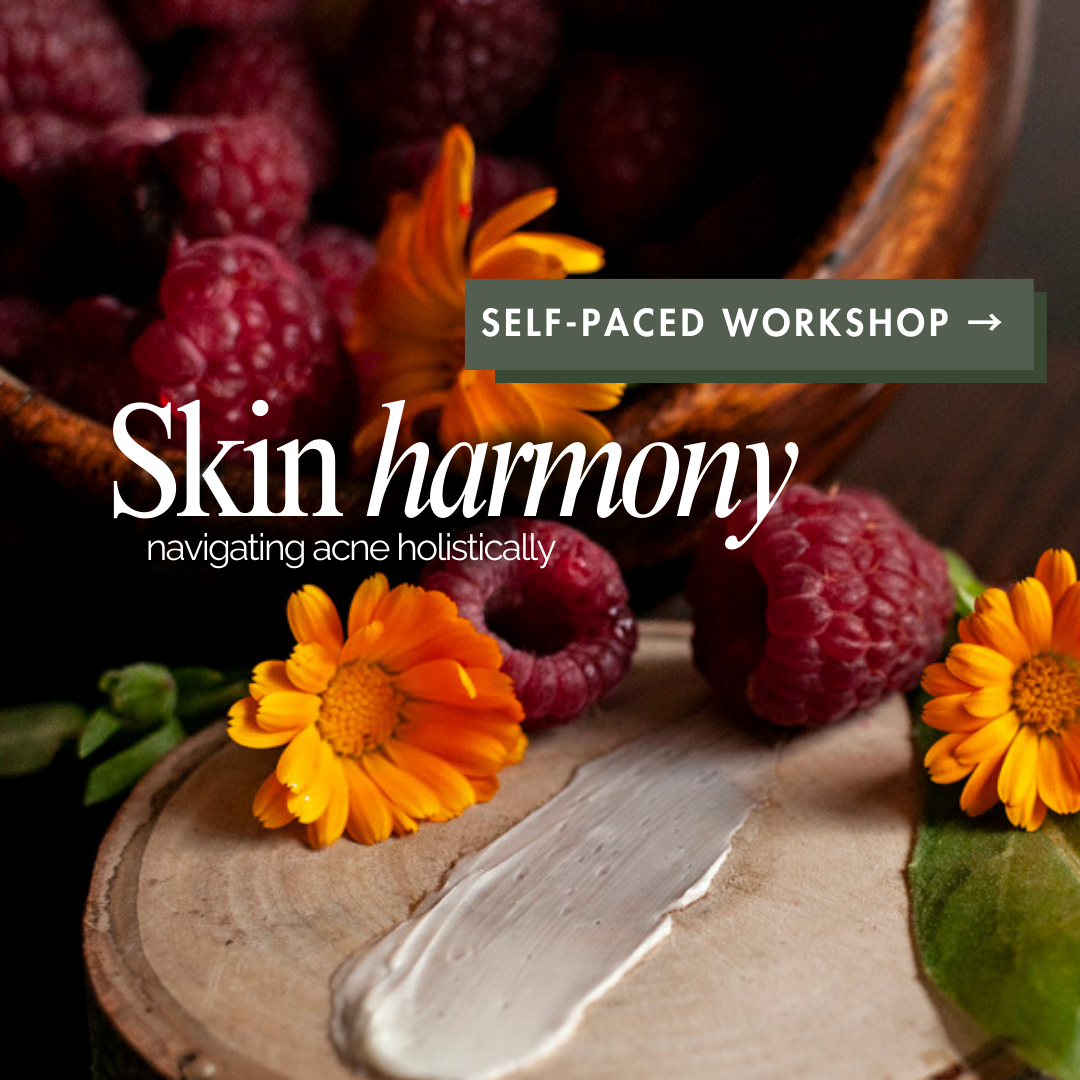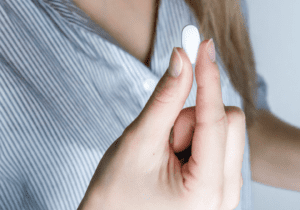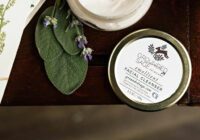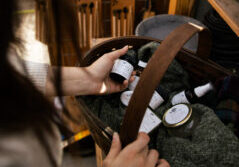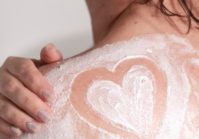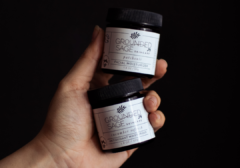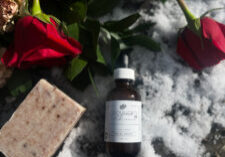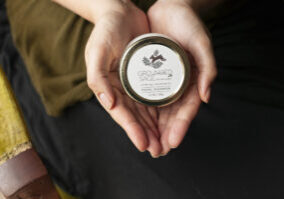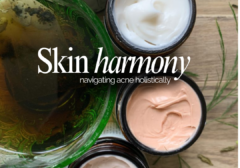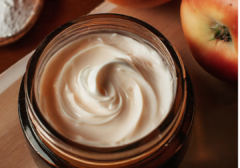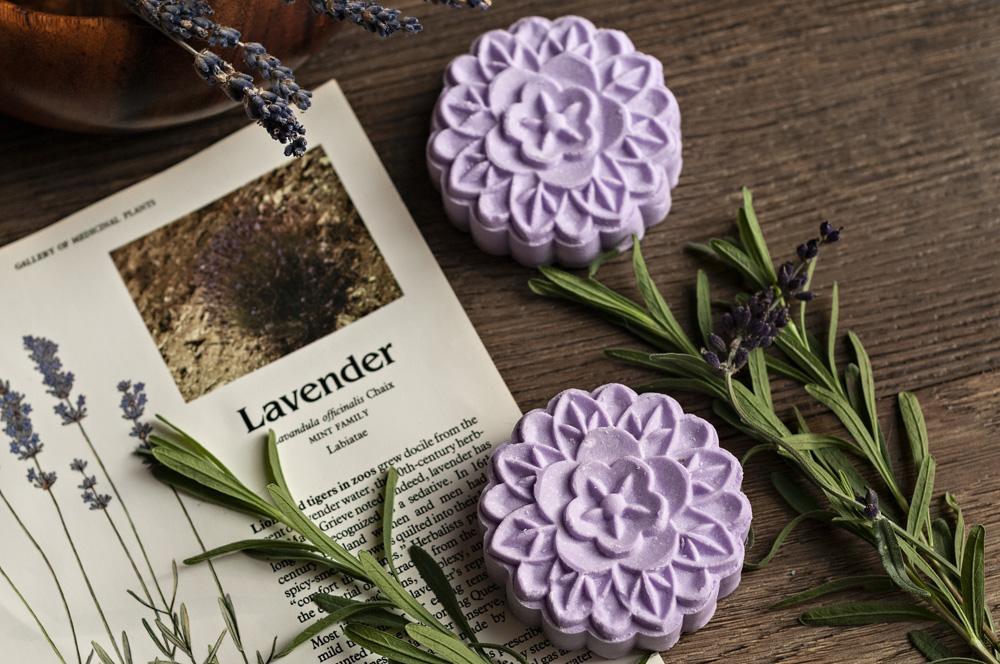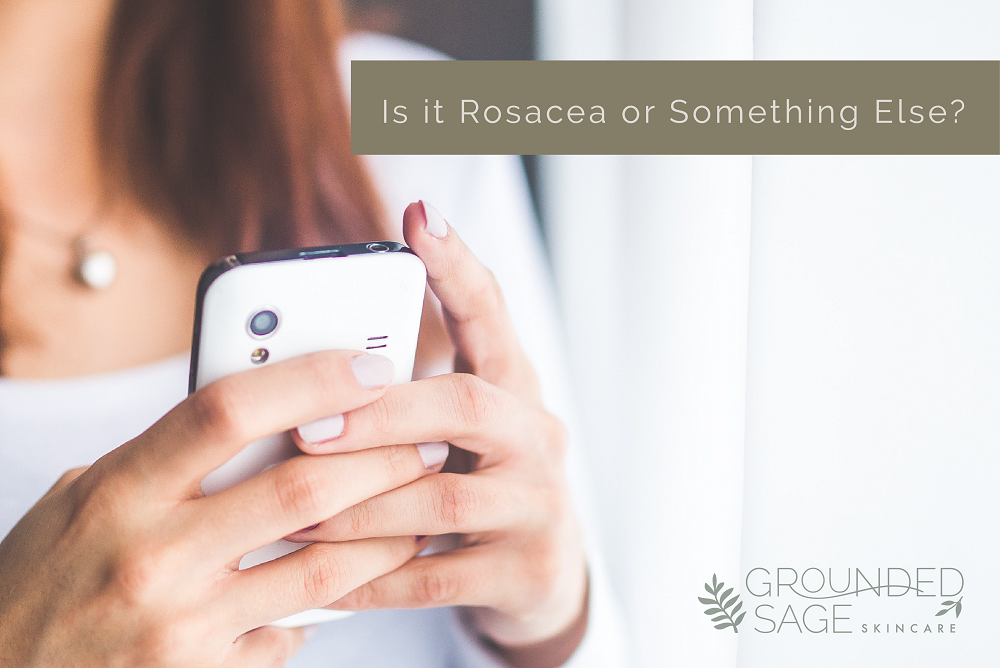
Today I’m going to help those of you who are wondering if your skin concerns are rosacea or something else! People can often confuse rosacea with acne, dermatitis (allergic reactions, rashes from irritants, etc) and even facial dandruff! So let’s set the record straight so you can make sure you’re creating a facial routine that targets the right thing!
Basic characteristics of rosacea
- Women between the ages of 30-50 and fair skin are most commonly diagnosed (although all skin tones can be affected)
- Rosacea is an inflammatory condition
- Can involved non-facial areas of the skin like neck and chest.
- There are several sub-types of rosacea which are classified by the location and pattern of the inflammation but they all experience the following…..
-
- Persistent redness of any or all rounded areas of the face (such as cheeks, nose, chin, and mid-forehead)
- The skin looks red, hot and inflamed but infection is not a factor.
- Waxy yellow bumps with a central pore (known as sebaceous hyperplasia papules) are present and often misidentified as milia.
-
- It’s possible to have more than one type of rosacea
- Many people (especially those with the erythematotelangiectatic type) can also have facial dandruff (known as seborrheic dermatitis)
- Subtypes (see image below):
-
- 1 – Erythematotelangiectatic
- 2 – Papulopustular (often confused with acne)
- 3 – Glandular
- 4 – Ocular
-
Areas commonly affected by rosacea
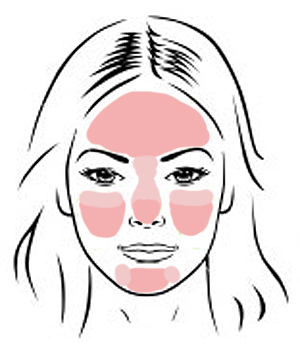
How rosacea is different from acne
- Look for blackheads, not just enlarged or clogged pores. Blackheads are more common in acne.
- Hormonal acne usually manifests as big, painful cysts along the jaw which is not a common site for rosacea.
- Bacteria often plays a role in acne, where it doesn’t with rosacea. (bacteria test)
Areas commonly affected by adult acne
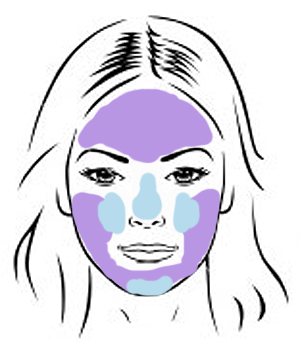
How rosacea is different from the rashes of dermatitis and facial dandruff
- If the irritation is located only where a product is being applied it could be the condition is caused by a potential product allergy or irritation (making it dermatitis and not necessarily rosacea)
- Itching is often experienced with allergic reactions and many ingredients in common skin care products be can allergens that cause itching/dermatitis. Rosacea is not commonly associated with itching.
- There is often a dry, chapped appearance plus stinging in irritant reactions (not the case with rosacea). Common examples of this are from the use of alpha hydroxy acid (AHA) or harsh acne products.
- Dandruff usually involves eyebrows, hairline, ears, and along the sides of the nose – areas uncommonly affected by rosacea.
Areas most commonly affected by facial dandruff

Hopefully, this clears up some common misconceptions about Rosacea. If you’re looking for more rosacea resources, CLICK HERE.
Until next time,
![]()
Pin this article for later:







